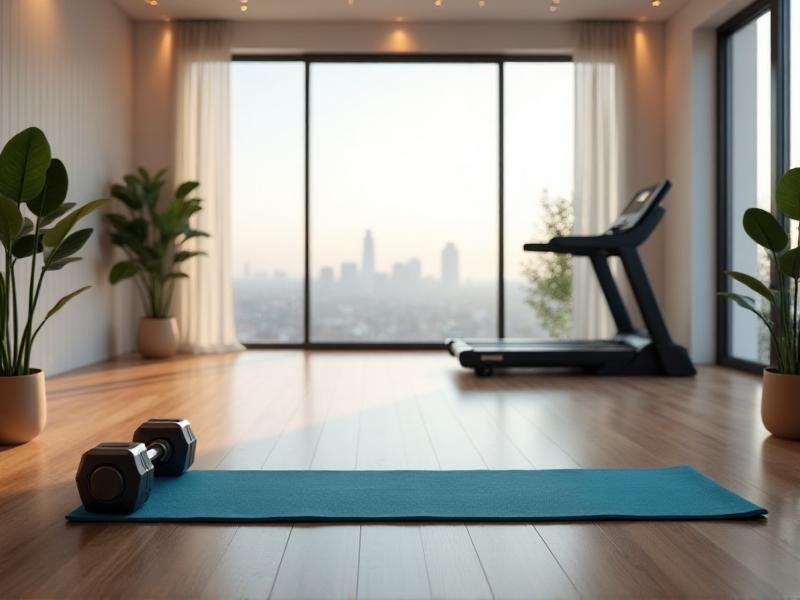20-Minute Home Workouts That Actually Work
Why 20-Minute Home Workouts Are the Perfect Fit for Busy Lifestyles
In today’s fast-paced world, finding time to exercise can feel like an impossible task. Between work, family, and other commitments, it’s easy to let fitness fall by the wayside. However, 20-minute home workouts offer a practical solution. These short, efficient routines are designed to maximize results with minimal time investment. Whether you’re a beginner or a seasoned fitness enthusiast, 20-minute workouts can be tailored to your fitness level and goals. They eliminate the need for expensive gym memberships or lengthy commutes, making it easier than ever to stay consistent. Plus, research shows that high-intensity, short-duration workouts can be just as effective as longer sessions when done correctly. By focusing on compound movements and full-body exercises, you can achieve significant improvements in strength, endurance, and overall health in just 20 minutes a day.

The Science Behind Short, Effective Workouts
Short workouts are more than just a time-saving hack—they’re backed by science. High-Intensity Interval Training (HIIT), for example, has been proven to burn calories, boost metabolism, and improve cardiovascular health in a fraction of the time compared to traditional cardio. The key lies in intensity. By pushing your body to its limits during short bursts of activity, you create an “afterburn effect,” where your body continues to burn calories even after the workout is over. Additionally, 20-minute workouts are mentally easier to commit to, reducing the likelihood of skipping sessions. Studies also show that consistency is more important than duration when it comes to long-term fitness success. By incorporating short, focused workouts into your routine, you’re more likely to stick with it and see lasting results. This approach also allows for greater flexibility, enabling you to adapt your fitness routine to your daily schedule without feeling overwhelmed.

Essential Equipment for 20-Minute Home Workouts
One of the biggest advantages of home workouts is that they require minimal equipment. With just a few basic items, you can create a versatile and effective workout routine. A yoga mat provides comfort and stability for floor exercises, while a set of dumbbells or resistance bands adds variety and intensity to strength training. Kettlebells are another great option for full-body workouts, combining cardio and strength in one. If you’re short on space or budget, bodyweight exercises like push-ups, squats, and lunges can be just as effective. For those looking to add a cardio element, a jump rope or a small step platform can elevate your heart rate quickly. The key is to choose equipment that suits your fitness level and goals, ensuring that your 20-minute workouts are both challenging and enjoyable. Remember, the focus should be on quality over quantity—using proper form and technique will yield better results than simply adding more equipment.

Sample 20-Minute Full-Body Workout Routine
Ready to get started? Here’s a sample 20-minute full-body workout that you can do at home with no equipment required. Begin with a 2-minute warm-up of dynamic stretches like arm circles and leg swings to prepare your body. Next, perform each of the following exercises for 40 seconds, followed by 20 seconds of rest: 1) Bodyweight squats, 2) Push-ups, 3) Plank with shoulder taps, 4) Lunges (alternating legs), and 5) Mountain climbers. Repeat the circuit three times, ensuring you maintain proper form throughout. Finish with a 2-minute cool-down, focusing on static stretches to improve flexibility and reduce muscle soreness. This routine targets all major muscle groups, improves cardiovascular fitness, and can be modified to suit your fitness level. For added intensity, reduce the rest time or increase the number of rounds. Consistency is key—aim to complete this workout 3-4 times per week for best results.
How to Stay Motivated and Consistent with Short Workouts
Staying motivated is often the biggest challenge when it comes to fitness. To keep your 20-minute home workouts engaging, try mixing up your routine regularly. Incorporate different exercises, change the order, or experiment with new equipment to prevent boredom. Setting specific, achievable goals can also help you stay on track. Whether it’s improving your strength, losing weight, or simply feeling more energized, having a clear purpose will keep you focused. Tracking your progress is another powerful motivator—use a journal or an app to record your workouts and celebrate your achievements. Additionally, find a workout buddy or join an online fitness community for accountability and support. Remember, consistency is more important than perfection. Even on busy days, a quick 20-minute workout is better than skipping it altogether. By making fitness a non-negotiable part of your routine, you’ll build healthy habits that last a lifetime.
Customizing Your 20-Minute Workout for Specific Goals
One of the best things about 20-minute home workouts is their versatility. Whether your goal is to build muscle, lose weight, or improve flexibility, you can tailor your routine to meet your needs. For strength training, focus on compound exercises like squats, deadlifts, and push-ups, using heavier weights or resistance bands for added intensity. If weight loss is your priority, incorporate more cardio-based movements like burpees, jumping jacks, or high knees to elevate your heart rate. For those looking to improve flexibility and mobility, dedicate your 20 minutes to yoga or stretching exercises that target tight areas like the hips, hamstrings, and shoulders. You can also combine different elements to create a balanced routine—for example, alternating strength and cardio days. The key is to listen to your body and adjust your workout based on how you feel. By aligning your routine with your goals, you’ll stay motivated and see progress faster.
Tips for Maximizing the Effectiveness of Short Workouts
To get the most out of your 20-minute home workouts, it’s important to focus on intensity and efficiency. Start by eliminating distractions—turn off your phone, close the door, and create a dedicated workout space. Warm up properly to prepare your muscles and prevent injury, and cool down afterward to aid recovery. During the workout, prioritize compound movements that engage multiple muscle groups, such as squats, lunges, and rows. This allows you to work more muscles in less time. Maintain proper form to avoid injury and ensure you’re targeting the right muscles. If you’re short on time, consider circuit training or supersets, where you perform exercises back-to-back with minimal rest. Finally, don’t forget to hydrate and fuel your body with nutritious food to support your fitness goals. By following these tips, you can make every minute of your workout count.
Common Mistakes to Avoid in 20-Minute Home Workouts
While 20-minute home workouts are convenient, there are a few common pitfalls to watch out for. One mistake is skipping the warm-up and cool-down, which can lead to injury and muscle soreness. Another is focusing too much on quantity over quality—performing exercises quickly but with poor form reduces effectiveness and increases the risk of injury. It’s also easy to fall into a routine rut, doing the same exercises repeatedly, which can lead to plateaus. To avoid this, regularly switch up your routine and challenge yourself with new exercises or increased intensity. Additionally, don’t neglect rest and recovery—overtraining can lead to burnout and hinder progress. Finally, avoid comparing yourself to others. Everyone’s fitness journey is unique, and progress takes time. By being mindful of these mistakes, you can ensure your 20-minute workouts are safe, effective, and enjoyable.
Incorporating Mindfulness and Recovery into Your Routine
While intensity is important in 20-minute home workouts, so is mindfulness and recovery. Incorporating mindfulness techniques like deep breathing or meditation before or after your workout can help reduce stress and improve focus. Pay attention to how your body feels during each exercise, and adjust as needed to avoid overexertion. Recovery is equally crucial—stretching, foam rolling, and taking rest days allow your muscles to repair and grow stronger. Hydration and nutrition also play a vital role in recovery, so make sure you’re fueling your body with the right nutrients. Listening to your body and prioritizing recovery will not only enhance your performance but also prevent burnout and injury. By balancing intensity with mindfulness and recovery, you’ll create a sustainable fitness routine that supports your overall well-being.









